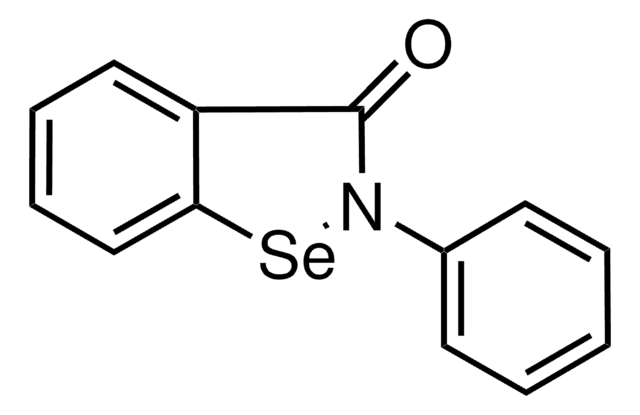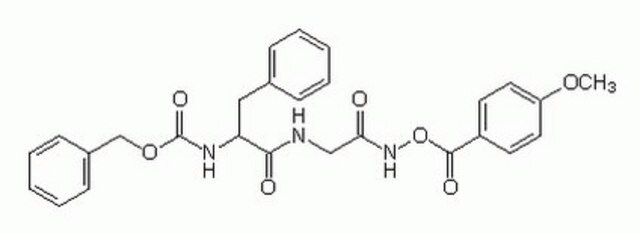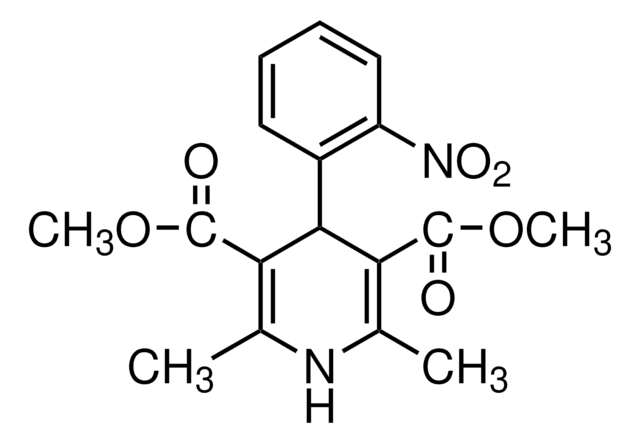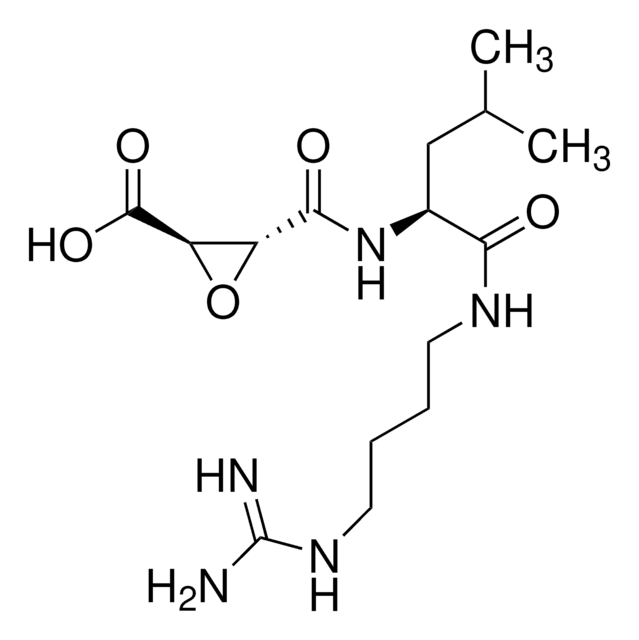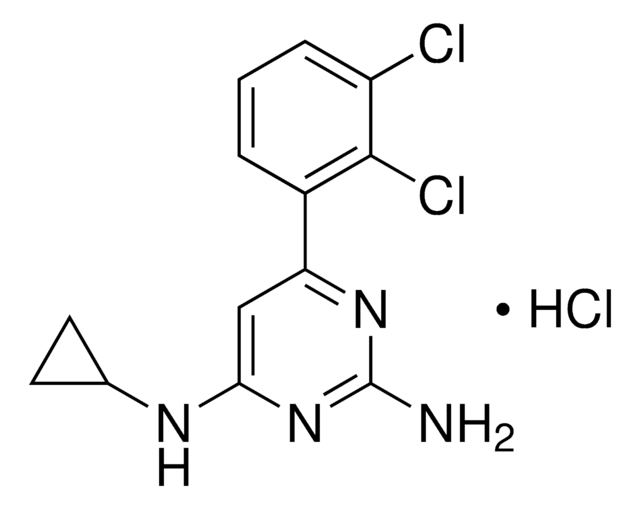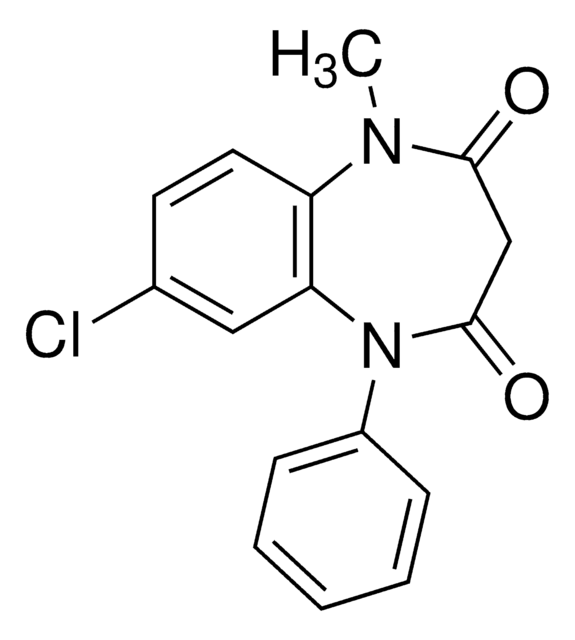C1480
Z-Phe-Ala fluoromethyl ketone
≥90% (TLC), powder
Sinónimos:
Z-FA-FMK
About This Item
Productos recomendados
Nivel de calidad
Ensayo
≥90% (TLC)
Formulario
powder
color
white to off-white
solubilidad
DMSO or DMF: 20 mM
Condiciones de envío
dry ice
temp. de almacenamiento
−20°C
cadena SMILES
C[C@H](NC(=O)[C@H](Cc1ccccc1)NC(=O)OCc2ccccc2)C(=O)CF
InChI
1S/C21H23FN2O4/c1-15(19(25)13-22)23-20(26)18(12-16-8-4-2-5-9-16)24-21(27)28-14-17-10-6-3-7-11-17/h2-11,15,18H,12-14H2,1H3,(H,23,26)(H,24,27)/t15-,18-/m0/s1
Clave InChI
ASXVEBPEZMSPHB-YJBOKZPZSA-N
Aplicación
- cathepsin inhibitor to study its effects on dendritic cells
- papain-like cysteine protease inhibitor to study its effects on cadmium-induced mitochondrial apoptosis
- cysteine protease inhibitor to study its effects on the interaction of toll-like receptor 9 (TLR9) with granulin in RAW macrophages
Acciones bioquímicas o fisiológicas
Código de clase de almacenamiento
11 - Combustible Solids
Clase de riesgo para el agua (WGK)
WGK 3
Punto de inflamabilidad (°F)
Not applicable
Punto de inflamabilidad (°C)
Not applicable
Equipo de protección personal
Eyeshields, Gloves, type N95 (US)
Elija entre una de las versiones más recientes:
¿Ya tiene este producto?
Encuentre la documentación para los productos que ha comprado recientemente en la Biblioteca de documentos.
Nuestro equipo de científicos tiene experiencia en todas las áreas de investigación: Ciencias de la vida, Ciencia de los materiales, Síntesis química, Cromatografía, Analítica y muchas otras.
Póngase en contacto con el Servicio técnico


